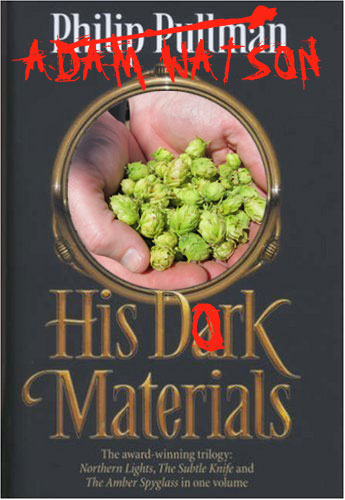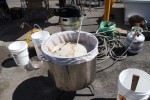 The academic in me desperately wanted a thesis to this article, but I don’t think there is going to be one. The BA recently released the 2013 Raw Materials Issue of the New Brewer, and I got all hot and bothered reading about global barley and hop yields. If you want statistics and details about the yields in various growing regions, I recommend reading it. Rather than parroting back the useful information contained therein, I am going to take a swing at a basic economic view. I took ECON 101 in college, so I should be qualified, right? Let’s look at a couple of factors that may influence the price volatility in beer’s two agricultural main ingredients: barley and hops.
The academic in me desperately wanted a thesis to this article, but I don’t think there is going to be one. The BA recently released the 2013 Raw Materials Issue of the New Brewer, and I got all hot and bothered reading about global barley and hop yields. If you want statistics and details about the yields in various growing regions, I recommend reading it. Rather than parroting back the useful information contained therein, I am going to take a swing at a basic economic view. I took ECON 101 in college, so I should be qualified, right? Let’s look at a couple of factors that may influence the price volatility in beer’s two agricultural main ingredients: barley and hops.
Barley is comparatively stable pricewise. I know that probably sounds like heresy to anyone in the barley growing industry, but hear me out. For anyone who has been buying these materials for more than a couple of years, be it at the commercial or at the homebrew level, you have probably noticed that grain has a few ups and downs but is mostly pretty stable in price. Hops, on the other hand, can take some pretty serious swings in price. I can’t offer a conclusive reason, but I can muse a bit, so here we go.
Barley can be harvested as little as 14 weeks after planting. This rapid maturation allows a good deal of responsiveness on the part of a grower. This flexibility and responsiveness means that as prices start to creep up, growers can plant more to take advantage of that price quickly, and the increased supply created by that planting will serve to suppress that price. Likewise, if prices start to dip, growers will plant less, and the price will rise in the face of scarcer supply. Because of the fast turnaround, these economic principles can play out relatively quickly in this particular market.
The barley market is given further flexibility by the double-edged sword of its utility. Because many grains have relatively interchangeable uses, the market can respond readily to peaks and valleys in supply and demand. When there is a glut of barley, lots of it will go to uses other than malting. Ordinarily about 25% of the world’s barley production will go to maltsters for brewing purposes, but if there is an unusually high harvest, plenty more can go to alternative uses such as cereal grains and animal fodder. The other edge of that sword is that, if there is an unusually low harvest, the quality standards for brewing barley can dip slightly or the price can rise slightly to make sure there is enough brewing grain, and other users will substitute alternative grains such as wheat, corn, and oats.
Hops are a different proverbial beast than barley. A normal hop plant will take five to seven years to reach maturity and begin being commercially viable. That is after what can sometimes be decades of manipulation and experimentation to make sure that the strain is something that growers want to grow and brewers want to brew with. This longer time investment means that supply responsiveness is nowhere near what it is with barley. When hop prices are low, growers can plant more acreage, but it will be years before that new acreage produces enough material to start altering global supply.
Furthermore, there is greater discernment among brewers about the particular varieties of hops available. While there are certainly a wide variety of barley types grown worldwide, the differences between those types are made mostly irrelevant to brewers because of the quality standards for malting barley and the malting process itself. Hop varieties are extremely important for brewers. If your IPA calls for Citra but Nugget is all that is available, you simply won’t be making the same beer. Hops also do not have the flexibility advantage of exterior influence. When there are too many hops available, there is no other significant use to take the extra. Prices simply drop in response to the glut. Similarly, when supply plummets, brewers simply cannot find another substitute. Only hops can do what hops do, and no other product will provide that functionality, especially in the hop-obsessed world of craft brewing. If things get tight in the hop world, as they have at least twice in the past ten to twelve years, prices simply rise.
I guess that might explain why your big, chewy stout costs about the same every time you brew it, but your aromatic triple IPA doesn’t. Hooray for ECON 101. Do with that what you will. Until then, faithful readers, thanks for reading, and happy drinks!
P.S. Remember to let me know if you have some specific topic you would like me to babble about next time. You can tell me in person, by e-mail, or in the comments right down below.





